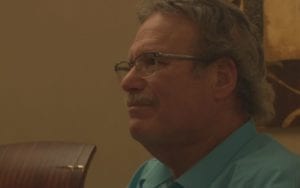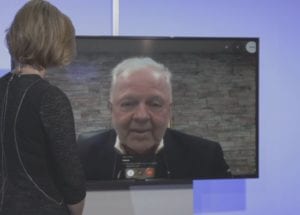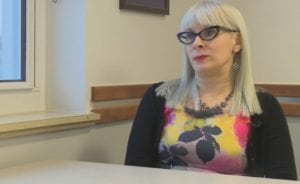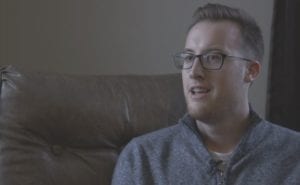Special Report Part 2: “the Sound of Silence,” Experts Explain the How and Why of Sexual Abuse in the Catholic Church
WEEK TV Channel 25
And he’s not alone in his claims. The attorney who represented him and 11 others in a lawsuit later settled with the Peoria Diocese said these cases are still happening today. Frederick W. Nessler, Attorney: ” Well we’ve handled between 200 and 300 cases, and I think it’s north of 250, now. I think we have 40 cases in house, presently, we’re working on,” explained Attorney Frederick W. Nessler of The Law Offices of Frederick W. Nessler & Associates, Ltd.. Admittedly, he has multiple law offices in several states including Illinois, and some of those cases involved sexual abuse in other denominations and institutions, but he reiterated the majority of them involved the Catholic Church.
For Jones, he says the sexual abuse he suffered at the hands of Father Walter Breuning lasted 6 years, but took him decades to reveal. “I think it boils down to shame and humiliation,” Jones shares
It’s something Illinois State University Professor Shelly Clevinger, PhD says is common among victims of sexual abuse. “You might not know it’s abuse if you were a child, and what’s happening to you, you might just think in the context of somebody giving you affection, or you think that’s what supposed to happen between adults and children. Or you might love them, because it’s often someone we know and respect and you are afraid of something bad happening to them,” she explains.
Clevinger has a unique perspective. Not only is she Catholic, she has also conducted extensive research on sexual abuse survivors, and teaches a unit on sex offenders. She says it’s common for abusers to “groom” their victims, winning not only their trust, but that of their family members. Part of that, she explains, is a power dynamic involving a person in a position of authority. And while it occurs in other denominations and institutions, she says it’s more prominent in the Catholic Church where Priests have long been put on a pedestal, believed by many to be infallible. “So not only do they have that power dynamic they know that they have a sort of open access to victims and that parents would probably be really excited if the Priest took an interest in their child,” she adds. But what would motivate someone to commit such heinous acts on children in the first place? “They are pedophiles, they are absolutely pedophiles who are using their position to gain access to children. Pedophiles are attracted to positions where they get to work with children,” she states emphatically. However, while he doesn’t necessarily disagree with her, an Illinois psychologist who says he’s counseled accused Priests here in our state has a slightly different diagnosis. Although he asked to remain anonymous, he explained off-camera that he believes the men he worked with were sex addicts. He also points to a report commissioned by the U.S. Conference of Catholic Bishops, commonly known as the John Jay Report. He says that study “concluded that the vast majority of sex offenders are not pedophiles but ‘situational generalists’ violating whoever they had access to.” Or, as he put it, “Priests who were tempted to exploit their position of trust around children were far more likely to choose boys rather than girls” in most cases not because they were homosexual, but instead because “boys were more available to them.” Still, whether they were pedophiles or sex addicts, how was that behavior not identified, and why were some of them moved from parish to parish? The psychologist we talked to says some of the blame falls on the psychiatric community. He says when allegations started being made, the Church put “too much faith in psychiatrists” who failed to recognize these addictions as a chronic disease.” He says when much of this abuse was taking place the Church sent priests for counselling, only to later be deemed “cured” by those doctors and sent back into the Church. He says these men, and in some cases women, can’t be rehabilitated to return to the Church, likening them to recovering alcoholics trying to return to work in a bar, eventually unable to resist temptation, a sentiment with which Clevinger agrees. “Yes, they need to be removed from the priesthood, and I would say they need to be in prison,” Clevinger explains. Of course, that often isn’t the case. Father Breuning was already retired when he was defrocked shortly before his death amidst allegations by Jones and at least two others. Since then there have been countless headlines here in Illinois detailing other allegations of abuse and settlements, along with claims by Former Attorney General Lisa Madigan that dioceses in our state have under reported the number of priests and clergy who have faced allegations of abuse. It’s something Jones’ attorney believes is possible. When we asked him if there could be predator priests who have not yet been named, he responded, “Probably, yes, absolutely. Not only priests but I think other individuals in other institutions.” We tried reaching out to the Peoria Diocese and Bishop Daniel Jenky only to have our request for an interview denied. They did provide a statement outlining some of the steps they’ve taken to implement screening procedures and training for parishioners and staff. Still, this practice of only communicating through press releases continues a pattern we’ve seen in previous 25 News reports. To Jeff Jones, it’s another example of the Church maintaining its silence. “In their mind the church does more good than this particular situation is bad for people,” says Jones. But, for Andrew Isbell, a Peoria parishioner who also works for the Catholic Church, he says there’s more transparency within their holy walls than outsiders realize. “Just reading our bulletins, right, we open it up right after some of those allegations take place, and the Bishop would actually say which Priests were alleged and which were removed and which retired,” he explains.
He also adds that there is great remorse within the Church. “As a member of that church, I also just need to say I’m sorry for anybody who’s ever experienced this. Because, um, it’s not okay,” Isbell chokes out with tears starting to well in his eyes. Still, he and his wife say they’ve remained steadfast in their faith, and are still raising their children in the church, partially because Isbell says he’s seen firsthand some of the changes that have been made in recent years. “As part of my job, I work as a religious education director, so I actually have to go through all the screening that takes place within the diocese,” he maintains. He says that includes fingerprinting, background checks, and training on spotting sexual abuse. These are steps he credits to those survivors who have come forward, breaking their silence, to hopefully help the Catholic Church start to heal. ” I think the awareness will do a great good in the church, because it will allow the church to dialogue, to speak about it, and in speaking about it, I think only good can happen from it,” Isbell shares. Of course we likely haven’t heard the last of this issue. There’s a lawsuit pending that names a priest from Chillicothe. And the law firm representing the alleged victim says they will soon identify hundreds of previously unnamed predator priests in our state. To see Part 1 including Jeff Jones’ full story: https://week.com/news/2019/02/13/special-report-the-sound-of-silence-a-look-at-allegations-of-abuse-within-the-peoria-diocese/?fbclid=IwAR1gDgjX37b2XpIrekdHptOrfMp3J8jGV10RDDZdj6xafX9rByqP_HX4Uho Here’s the full statement sent to 25 News from the Peoria Diocese: The Catholic Diocese of Peoria is fully committed to the implementation of the USCCB Charter for the Protection of Children to ensure that the young people in our schools, youth groups, religious education programs, and other ministries remain safe. Since the Charter was first implemented in 2002, the Diocese has trained and screened more than 12,000 adults and educated over 35,000 children and young people. • Our safe environment training program, provided through Catholic Mutual’s CMGConnect, is required for all clergy, religious, and lay employees, as well as volunteers who have regular contact with children as part of their service to the Church. Records are maintained of all adults who have been trained. • Children enrolled in our Catholic schools and parish religious education programs are educated each year using age appropriate materials pertaining to personal safety. • All clergy, religious, and lay staff, and all volunteers who have regular contact with children, are required to submit to criminal history background checks. In addition, each adult has a background check conducted by the Department of Children and Family Services via its Child Abuse and Neglect Tracking System (CANTS). Each adult is also checked against the National Sex Offender Registry. Records are maintained of all adults who have completed background checks. As a Diocesan community, we affirm our commitment to work diligently to prevent the sexual abuse of children and to provide listening and support for victims of abuse. We pray for all who have experienced abuse, that the power of Christ may heal and renew them in body, mind, and spirit. We thank the LORD for our children and young people, and commit our institutions to ensuring their ongoing safety and protection. For more on the Save Environment Program and those Priests and Clergy members identified by the Peoria Diocese as being credibly accused: https://cdop.org/safe-environment-program/ For more on a national group that tracks allegations of abuse, including the Peoria
|
.
Any original material on these pages is copyright © BishopAccountability.org 2004. Reproduce freely with attribution.




